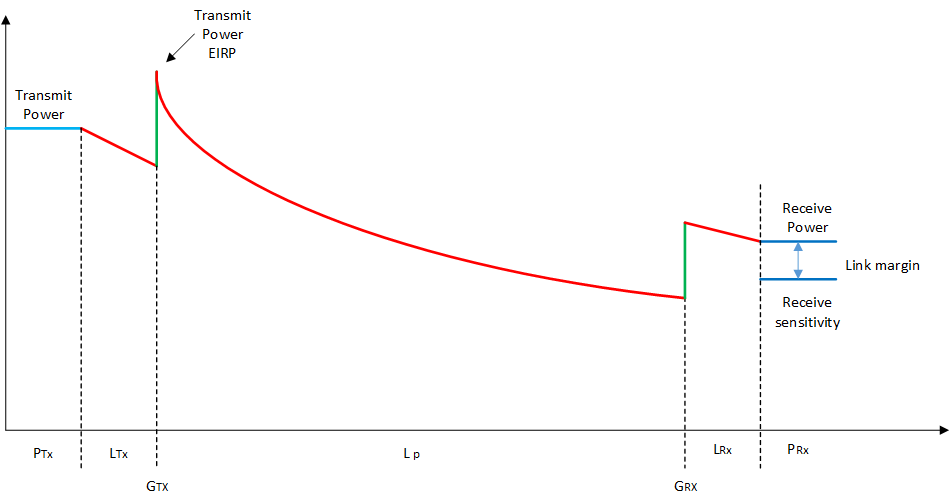Link budget
Introduction
A communication link budget is a way of accounting for all gains and losses in a communication system from transmitter output power to the power seen by the receiver. By knowing all the losses and gain in our communication system, we can predict how reliably the signal can be received. For example, in a satellite communication link the provider would need to know the satellite transmitter power output, the gain provided by the transmit antenna, propagation loss etc. in order that the receiver can still receive the signal under adequate signal to noise ratio. Link budgets are useful in point to point communication where the link can be optimised with the use of highly directional transmitting and receiving antennas. The chart below shows a graphical representation of a link budget.

Link budget
Parameters
A basic link budget that allows calculation of received power can consist of the following parameters:
PTx: Transmit power
LTx: Losses at transmitter, cable, connectors etc.
GTx: Transmitter antenna gain.
LP: Propagation loss
GRx: Receiver antenna gain
LRx: Losses at receiver, cable, connectors etc.
PRx: Receive power
To calculate the received power level, we only need to combine all the values (when they are all expressed as dB) :
$$P_{Rx} = P_{Tx}- L_{Tx}+G_{Tx}-L_{P}+G_{Rx}-L_{Rx}$$
Note that the first 3 terms of the equation equals the transmitter EIRP.
Link margin
Since the communication conditions fluctuate, it is important to leave a margin between the lowest receivable level (receive sensitivity)* and the normal receive level to account for various communication phenomena e.g. fading. This ensures communication reliability.
* Receive sensitivity is a combination of equipment performance and impact of RF noise from the environment. Furthermore, the nature of the transmission e.g. the reception of one time transmission rather than cyclic (repeating) would require more margin.